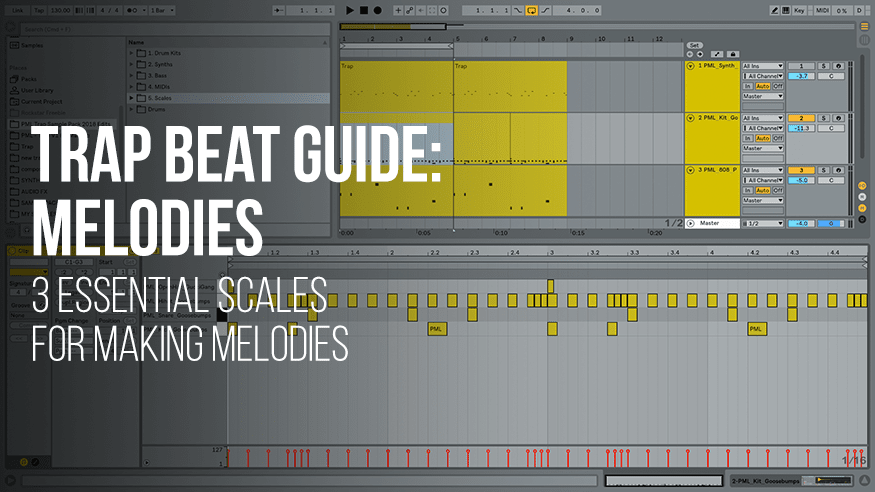
Making a trap beat shouldn’t be too complicated. In fact, most of them consist of very few elements. In this article I’ll show you my trap beatmaking workflow! In case you missed it, here's part 1 with drums tips.
Part 2: Melody
Before making a bass pattern I like to make a melody and figure out its chord progression. Most trap melodies are based on one of these 3 scales - minor, harmonic minor, and phrygian. Here’s how these are created:
Btw, all of these scales and more are included in my trap toolkit - check it out!
The minor scale can be created from all the white keys from A to A - it’s the A Minor scale. Minor scale melodies are mostly moody and dark.

The harmonic minor scale is easy to create - all you need to do is raise the 7th step by a semitone. The raised step makes melodies sound a bit more interesting.

The phrygian scale is a bit different. Instead of raising the 7th, you need to lower the 2nd step by a semitone. This scale allows you to create tension between the second and first steps, which can sound very cool.

When writing melodies it’s helpful to lock yourself to one scale. Once you’ve decided on the scale, you can put in the scale notes outside the loop and press „Fold”. That’s going to leave you with just the notes from your scale, so that you’re always in key.

Trap melodies mostly have a simple A/B structure. The concept is to first make a phrase that works as a sort of „question”, then follow it up with a very similar „answer”.

While making trap melodies it’s crucial to remember which scale steps generate the most tension.
The 6th, 2nd and 4th scale steps generate the most tension. The 5th lets you harmonize nicely with the „safe” 1st step. The 3rd step is pretty safe too, but the 7th sounds a bit more melancholic - except when using the harmonic minor scale.
When making melodies you have to build tension, so the tension notes are the most important for you to remember. Tension notes combined with the „safer” notes create more dissonant intervals - like the 6th and 2nd, which results in a tritone, most dissonant interval of all. After building tension it’s nice to resolve to the safer notes.

The harmony doesn’t have to follow the minor scales though. If you’re trying to make a trap beat in a major key, make sure to throw in some minor chords. I recommend to stick with the following concept - „chord tones” sound safe, while „non chord tones” create tension. For example when I’m playing a C major chord, C E G are my chord tones, and all other scale steps are non chord tones.
I hope you found the article useful! Here's part 3 of this series with bass tips.
 Make sure to check out the new Trap Production Pack, where you'll find over 190 samples, instruments and MIDIs!
Make sure to check out the new Trap Production Pack, where you'll find over 190 samples, instruments and MIDIs!
If you're interested in 1 on 1 Skype sessions: http://bit.ly/pml_s_one2one